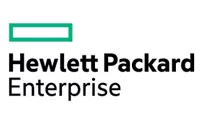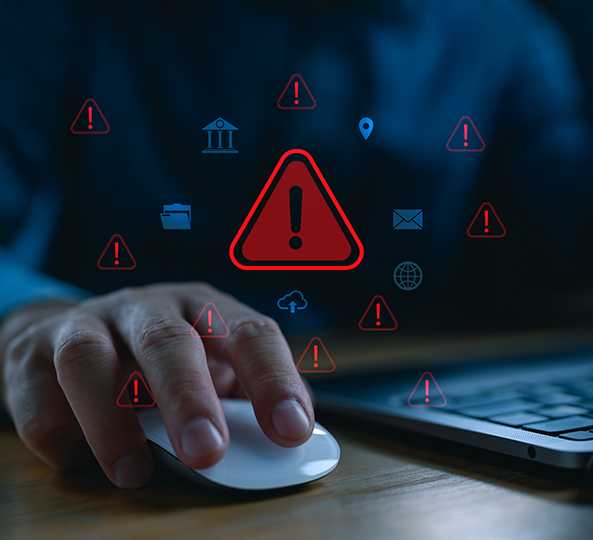Cybersecurity in 2025 is no longer just a technical concern—it’s a business imperative. As digital transformation accelerates, companies face a rising tide of sophisticated threats that can cripple operations and erode trust overnight. From data-hungry ransomware to AI-generated phishing scams, attackers are using smarter, faster, and more unpredictable methods to infiltrate networks. For small and medium-sized enterprises, limited budgets and resources make defence especially difficult. That’s where managed IT providers step in—delivering 24/7 protection, proactive monitoring, and strategic expertise that keep systems safe and compliant.
The Growing Cybersecurity Challenge in 2025
Cloud migration, remote work, and the integration of smart devices have expanded the modern attack surface far beyond traditional office boundaries. Hackers no longer need to breach a company’s physical firewall—they simply exploit remote endpoints, misconfigured cloud servers, or unsuspecting employees.
As cyber threats grow more sophisticated, managed IT services security plays a vital role in preventing such incidents through proactive monitoring and advanced defence systems. Reliable it support for small companies becomes crucial in such cases, offering professional oversight that ensures systems remain compliant, patched, and protected against emerging vulnerabilities.

Key Cyber Threats Managed IT Providers Help Prevent
1. Ransomware and Data Encryption Attacks
Ransomware remains one of the most destructive threats facing businesses in 2025. Attackers no longer rely on random campaigns; instead, they use tailored, data-driven approaches to target specific industries and networks. The rise of ransomware-as-a-service platforms allows even inexperienced criminals to launch sophisticated attacks with minimal technical knowledge.
Once inside a system, ransomware can encrypt critical files, halt business operations, and demand exorbitant payments in exchange for decryption keys. Managed IT providers protect against this through layered defences, including:
- Continuous data backups with secure offsite storage
- Network segmentation to contain breaches
- Behaviour-based monitoring to detect anomalies early
- Rapid isolation and remediation protocols
These proactive measures ensure that even if an infection occurs, businesses can recover swiftly without succumbing to financial extortion.
2. Phishing and Social Engineering Scams
Even the most advanced security systems can fail when human error enters the equation. Phishing emails, fraudulent login prompts, and fake websites continue to deceive employees into revealing sensitive credentials. In 2025, these attacks are enhanced by artificial intelligence—making fraudulent messages look eerily authentic and personalised.
- Managed IT providers implement advanced email filtering, domain monitoring, and AI-driven analysis to detect these subtle manipulations.
- Beyond technology, they strengthen the human firewall through ongoing awareness training.
- Teams are educated to identify warning signs—such as urgent financial requests or unexpected link attachments—and report them immediately.
Through this combination of automation and education, managed IT services security providers help organisations close one of the most exploited gaps in cybersecurity: human behaviour.
3. Cloud Security Breaches
With the cloud becoming the backbone of business infrastructure, misconfigurations and unauthorised access have emerged as major concerns. Attackers often exploit weak authentication or exposed APIs to infiltrate cloud environments and extract confidential data.
Managed IT providers apply multiple layers of cloud defence, including:
- End-to-end encryption of stored and transmitted data
- Multi-Factor Authentication (MFA) for all user logins
- Automated compliance and access audits
These controls ensure that sensitive data stored in SaaS, IaaS, and hybrid environments remains protected from prying eyes. As businesses increasingly rely on remote systems, managed IT specialists play a pivotal role in ensuring these virtual environments remain airtight and continuously monitored.
4. Insider Threats
Not all risks originate from outside the organisation. Insider threats—both intentional and accidental—pose significant challenges to modern cybersecurity. A single employee error, such as sharing confidential information or downloading unapproved software, can create a breach that compromises the entire system.
- Managed IT providers counter this through advanced user behaviour analytics and privilege management.
- They monitor login patterns, data transfers, and access requests in real time, flagging unusual activities that could indicate malicious intent or negligence.
- By enforcing the principle of least privilege—granting users only the access they truly need—providers drastically reduce the chance of internal data misuse.
- Regular audits and access revocations further ensure security integrity across departments.
Proactive Measures Adopted by Managed IT Services
Managed IT providers employ a proactive security model that prioritises prevention over cure. These measures combine automation, analytics, and human expertise to create a multi-layered shield.
Key protective strategies include:
- Continuous vulnerability scanning to identify and patch system weaknesses before exploitation.
- Regular software updates and patch management ensuring all applications remain current.
- Endpoint Detection and Response (EDR) tools that monitor real-time activity and isolate suspicious devices.
- Cloud encryption and MFA enforcement to safeguard remote data access.
- Security Information and Event Management (SIEM) systems for centralised visibility across all network activities.
- 24/7 monitoring and incident handling to contain potential threats before they escalate.
This proactive approach eliminates blind spots and provides businesses with peace of mind knowing that every digital layer is constantly protected.
The Strategic Role of Managed IT Providers
Cybersecurity is not just about reacting to incidents—it’s about anticipating them. Managed IT providers serve as strategic partners, ensuring that prevention, detection, and response are seamlessly integrated into daily operations.
For many growing businesses, particularly those relying on it support for small companies, having a dedicated external team provides expertise that would otherwise be unaffordable internally. Managed IT services bring:
- Around-the-clock monitoring and incident response
- Access to enterprise-grade tools at predictable costs
- Scalability to support business growth
- Strategic advice aligned with compliance standards
This approach not only strengthens defence but also allows internal teams to focus on core business objectives rather than constant threat management.

Future Cybersecurity Landscape: What Businesses Should Prepare For
Looking ahead, cybersecurity will become even more complex as AI, automation, and quantum computing reshape the threat environment. Attackers are expected to adopt quantum-based encryption-breaking techniques, and the volume of digital transactions will multiply exponentially.
The future of cybersecurity will depend not only on technology but also on collaboration. Businesses that partner with managed IT providers gain access to shared intelligence networks and predictive insights—turning cyber resilience into a competitive advantage rather than a reactive measure.
Conclusion
The cyber threats of 2025 demand more than basic antivirus or occasional updates—they require continuous vigilance, predictive intelligence, and expert intervention. Managed IT providers deliver precisely that, shielding businesses from a constantly changing array of digital dangers while keeping systems efficient and compliant. For smaller enterprises, this support acts as a lifeline—providing the confidence to innovate and operate securely in the digital economy. At Renaissance Computer Services Limited, we understand the importance of staying ahead in an ever-evolving cyber landscape













